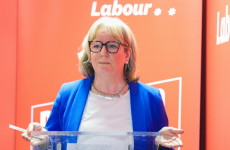Politics
Candidate Challenges Seanad Election Results in High Court

A candidate from the recent Seanad election has brought her case to the High Court, asserting that there was a legitimate expectation for a full recount of the votes due to an exceedingly narrow margin of defeat. Angela Feeney, a member of the Labour Party and Kildare County councillor, claims that the circumstances surrounding the vote counting raised significant transparency issues.
Feeney lost her bid for a seat on the agricultural panel to Fine Gael’s Maria Byrne by a margin of just one-ninth of a ballot. The High Court proceedings, held in Dublin, have revealed that Feeney’s request for a full recount was denied by the returning officer, despite the close nature of the election results.
Transparency Concerns in Vote Counting
During her testimony, Feeney highlighted problems with the counting environment at Leinster House, describing it as “cramped and crowded.” She expressed that the layout hindered the ability of candidates to observe the counting process effectively. “There was no proper line of sight to see the ballot papers being counted,” Feeney stated. According to her, the situation did not allow for adequate scrutiny of the electoral process, which is essential for maintaining public confidence.
The electoral laws permit candidates to request recounts, but the decision ultimately lies with the returning officer. Following her initial request, Feeney received a response indicating that only a limited recount of the 23rd count would be performed. This decision has prompted Feeney to challenge the returning officer’s discretion in her petition to the High Court.
Legal Arguments and Historical Context
Feeney’s senior counsel, Conor Power, argued that the margin by which she lost is among the closest seen in the Seanad elections since the 1980s. With a valid poll of 95,667 votes cast for the agricultural panel, Feeney secured 17,513 votes, while Byrne received 17,629. The minute difference raises questions about the integrity of the electoral process, especially when human error in counting could lead to significant discrepancies.
Power emphasized the importance of recounts, stating that “the purpose of the Electoral Act is to ensure an outcome that the public has confidence in.” He further noted that small margins warrant careful consideration by the returning officer, as recounts can lead to changes in vote totals. He is requesting the court to order a full recount to clarify any potential mistakes or irregularities in the initial count.
Feeney, who has participated in numerous election counts over the years, expressed her surprise at the counting conditions. She stated that the lack of visibility during the counting process was not only unusual but also detrimental to the transparency expected in elections.
Cross-examination by Catherine Donnelly SC, representing the returning officer, revealed that Feeney was not the only candidate eliminated by a narrow margin, suggesting that such occurrences are not uncommon. Nonetheless, Feeney maintained that the closeness of her loss was unprecedented for her experience.
The case continues, with the court considering the implications of the recount request and the broader issues of electoral transparency. As the proceedings unfold, they highlight the critical balance between procedural integrity and the public’s trust in the electoral system.
-

 Top Stories3 months ago
Top Stories3 months agoTributes Surge for 9-Year-Old Leon Briody After Cancer Battle
-

 Entertainment4 months ago
Entertainment4 months agoAimee Osbourne Joins Family for Emotional Tribute to Ozzy
-

 Politics4 months ago
Politics4 months agoDanny Healy-Rae Considers Complaint After Altercation with Garda
-

 Top Stories4 months ago
Top Stories4 months agoIreland Enjoys Summer Heat as Hurricane Erin Approaches Atlantic
-

 World5 months ago
World5 months agoHawaii Commemorates 80 Years Since Hiroshima Bombing with Ceremony
-

 Top Stories3 months ago
Top Stories3 months agoNewcastle West Woman Patricia Foley Found Safe After Urgent Search
-

 Top Stories5 months ago
Top Stories5 months agoFianna Fáil TDs Urgently Consider Maire Geoghegan-Quinn for Presidency
-

 World5 months ago
World5 months agoCouple Convicted of Murdering Two-Year-Old Grandson in Wales
-

 World5 months ago
World5 months agoGaza Aid Distribution Tragedy: 20 Killed Amid Ongoing Violence
-

 World5 months ago
World5 months agoAristocrat Constance Marten and Partner Convicted of Infant Murder
-

 Top Stories4 months ago
Top Stories4 months agoClimbing Errigal: A Must-Do Summer Adventure in Donegal
-

 Top Stories4 months ago
Top Stories4 months agoHike Donegal’s Errigal Mountain NOW for Unforgettable Summer Views









